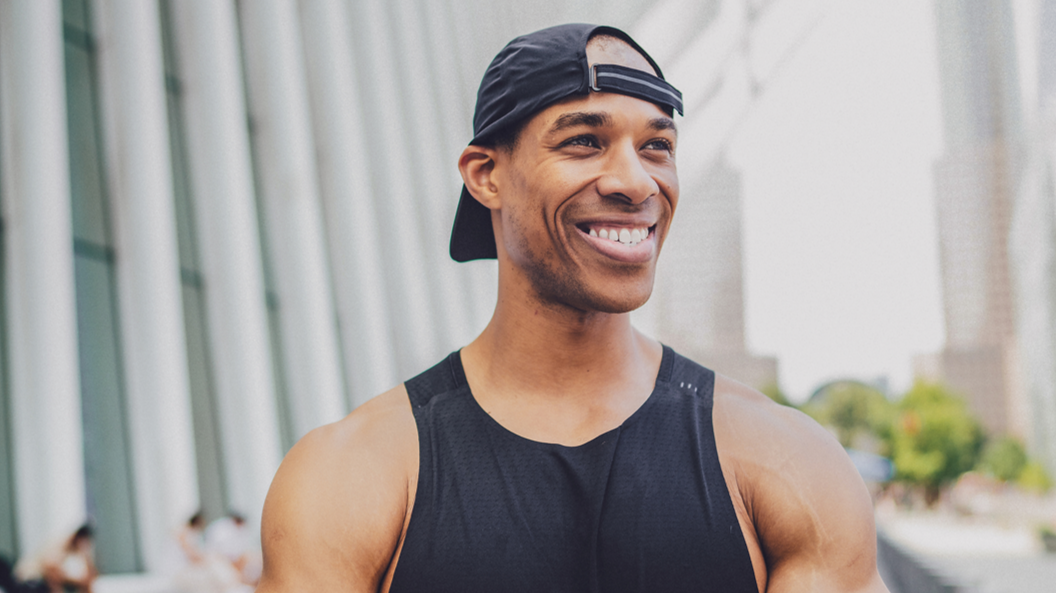How swapping moderate workouts for intense training improves anxiety
Exercise is good for your mental health, but how hard you train can make a big difference


The link between exercise and mental health is well-known, but new research has found that intense workouts, combining cardio and resistance training, offer the most benefit and can reduce the symptoms of anxiety and depression.
Harder training shows the most noticeable improvements, but the authors noted that any "physical exercise [is] an effective treatment." So, grab the best cross training shoes and start moving to feel the effects.
The program included a mixture of cardio exercise with strength training. Each group had step-ups, burpees, and lunges alongside several other moves to get your heart rate up.
Once onto resistance training, the routine made use of squats, planks, crunches, and push ups. The exercises formed part of a 12-station circuit, completed twice per session.
The study recruited 286 participants diagnosed with anxiety disorder, which is distinct from the more common feeling of anxiety. Many also had symptoms of depression as the two conditions often overlap.
To test the effects of exercise intensity, the recruits were randomly put into one of three groups. Some were given low-intensity training three times per week, while others had a high-intensity program.

The final third were put into a control group and given general exercise advice but no specific workout routine for the 12-week study. The two training groups were given similar routines but at different intensities.
Get the Fit&Well Newsletter
Start your week with achievable workout ideas, health tips and wellbeing advice in your inbox.
Using self-reported surveys to assess the severity of anxiety and depression before and after the training period, the researchers found that exercise reduced the symptoms of these debilitating conditions.
This backs up previous findings of the link between exercise and mental health, but the most exciting result was that there was a 'significant intensity trend' for improving anxiety symptoms.
High Intensity Interval Training (HIIT) is a great way to build intense workouts into your schedule. These short routines include several moves performed for 30-40 seconds with a brief rest period between.
If you're looking for a place to start, this HIIT workout can get you fitter, burn fat, and help you feel better, too. As the research also included resistance training, you can incorporate strength moves as well.
It's worth investing in a set of the best adjustable dumbbells for a space-saving way to add weights to your setup. You can then use them to up the intensity of HIIT sessions or for standalone resistance training.

James is a London-based journalist and Fitness Editor at Fit&Well. He has over five years experience in fitness tech, including time spent as the Buyer’s Guide Editor and Staff Writer at technology publication MakeUseOf. In 2014 he was diagnosed with a chronic health condition, which spurred his interest in health, fitness, and lifestyle management.
In the years since, he has become a devoted meditator, experimented with workout styles and exercises, and used various gadgets to monitor his health. In recent times, James has been absorbed by the intersection between mental health, fitness, sustainability, and environmentalism. When not concerning himself with health and technology, James can be found excitedly checking out each week’s New Music Friday releases.
-
 I tried wall balls for 30 days and the results surprised me
I tried wall balls for 30 days and the results surprised meTry this fitness challenge to boost total body strength
By Maddy Biddulph
-
 One simple thing new parents should prioritize above all else to maintain their health and fitness, according to a Centr trainer
One simple thing new parents should prioritize above all else to maintain their health and fitness, according to a Centr trainerHere's what I'm doing differently since becoming a first-time dad
By Sam Rider